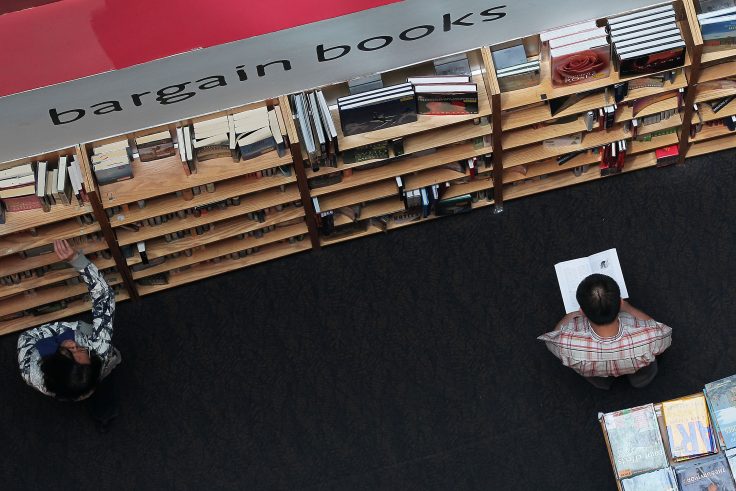REVIEW: ‘The Secret Lives of Booksellers and Librarians: True Stories of the Magic of Reading’ by James Patterson and Matt Eversmann

Before I went off to college, I would frequent libraries and bookstores, both large and small. One formative and saddening memory was of the local Borders—if you remember Borders—closing for good. Since then, bookstores have been closing at an alarming rate. Four major chains have completely disappeared in the last 30 years.
Libraries also are not what they used to be; they’ve adapted to become meeting places, technology hubs, or just quiet places to get out of the summer heat. Some now have more computers than they have books.
More tragically, “mom and pop” booksellers have gone under nationwide. One small used-book outlet shuttered in Williamsburg as I entered my freshman year at William & Mary. The advent of online access to literature, via Kindles or myriad other platforms, has detracted from the prevalence of America’s independent print book purveyors. Amazon is the largest bookseller in the country, making up at least 50 percent of print book sales. Some have suggested that by 2025, Amazon will control upwards of 70 percent of the market.
“Fortunately,” James Patterson notes, “in spite of cell phones, in spite of video games, in spite of online gambling and porn, in spite of the current storm of shortsighted politics—the habit of reading books is not yet on the brink of extinction. Not yet.”
Patterson, in his recent The Secret Lives of Booksellers and Librarians: True Stories of the Magic of Reading (coauthored with Matt Eversmann), brings to light the words of those who make books available to us avid readers. The book is a collection of anecdotes, reflections, and messages from librarians and bookstore operators and employees across the nation. Patterson takes a backseat in the book, allowing readers a chance to hear from others. His only words come in the two-page author’s note, his chapter titles, and how he describes each contributing author. Not exactly what I expected from one of America’s most prolific writers. Nevertheless, this compilation is a brilliant addition to his expansive catalog.
The book speaks to the importance of those who make literature available through loan or purchase. The author’s note likens the survival of book purveyors to a battle; librarians and booksellers are on the “front lines” for Patterson. The Secret Lives showcases all different kinds of book suppliers. From commercial bookstore employees to prison librarians, the diversity of opinion and background abounds.
Judy Blume, the now-retired children’s book writer, relates her story of opening a book outlet in Florida with her husband after 50 years of writing. Diego Sandoval Hernandez writes about his experience providing prisoners at Rikers with books and research materials, and how gratifying it is to supply people with what they’re looking to read. Mary Terry, an employee at a Texas Barnes & Noble, recounts her experience helping a young boy looking for a book. She tells readers, “This is the part of the job I love, getting kids hooked on books.”
Today, one in four children in America grows up without learning how to read. Of those that can read at all, approximately 40 percent of them cannot read at a proficient level. The CDC reports that American children aged 8-10, on average, spend around six hours a day looking at a screen, with 11-14 year-olds spending up to nine hours a day doing the same. The people in Patterson’s book can help America remedy this problem if we let them. If we as a nation care about the quality of our children’s education, then the children should accompany us on our venture back to our local bookstores and libraries.
Librarians and booksellers “understand in their hearts and souls that in the beginning was the word,” Patterson writes. These people preserve the basic human need to engage with literature. Mankind invented writing more than 3,000 years before Christ walked the earth, carving their thoughts into clay tablets in Sumer. Clay became papyrus. Papyrus became parchment. Parchment became paper. Scrolls became books. The written word is part of what it means to be human. But there has always been someone to make those resources available to the curious mind. Now, more than ever, those people are necessary.
Booksellers and librarians contribute to what Patterson calls the “magic” of reading. They encourage the “sanity-bolstering, empathy-forming act of spending time in somebody else’s brain,” he says.
There is something vulnerable, personal about getting help from a librarian. Do you remember the last time you had to look something up in high school or college and the librarian knew exactly where you’d find the book you asked about and five more on the topic? Or how about when a bookstore employee recommended the latest thriller or murder mystery when you purchased a Tom Clancy book? Patterson, by letting these book vendors tell their own stories, creates a window into a struggling industry. The people who make it their business to “find the right book for the right person … save people’s—and our collective—lives.”
You wouldn’t be reading this review if you didn’t like to consume literature and reviews of it, and that means you are exactly the person who ought to read this book. The men and women whose stories are contained therein, and those like them who make their living enriching the lives of others by furnishing them with books, are deserving of our appreciation, and our business.
The Secret Lives of Booksellers and Librarians: True Stories of the Magic of Reading
by James Patterson and Matt Eversmann
Little, Brown, 352 pp., $28
Edwin Carlson was an intern at the Washington Free Beacon and is a rising senior at William & Mary.
Original News Source – Washington Free Beacon
Running For Office? Conservative Campaign Management – Election Day Strategies!
